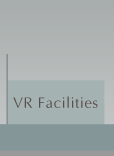

Digital imaging is more and more becoming an integral part of data acquisition and analysis in bioarchaeological research. Many new emerging technologies are now contributing to research dissemination within the field. This has become and increasingly important aspect of bioarchaeological research over the past several decades, with community based reporting equal in importance to academic and more traditional scholarly-based methods. Reports are moving away from the dry analytical lists of data to more overviews of results. Further, many communities want to see such dissemination accessible to education programs for students, and digital media is one of the ways of enhancing the process.
3D imaging presents a number of unique advantages. Once captured, the original object can be returned to its repository for safekeeping and the digital data can be stored. Digital models can be measured, described, projected or reproduced in physical form. The ability to store the digital model means that future researchers can revisit the collection to gather new measurements or observations that the original researchers did not think to collect. Thus, 3D modeling facilitates not only research, but also the ultimate preservation of the objects of study.










